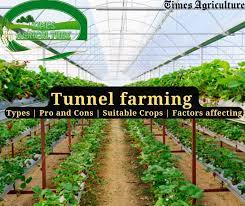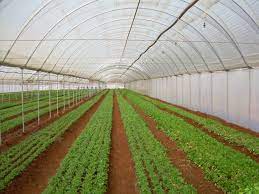How to Start a Tunnel Farming Operation Now



Tunnel farming has been around in South Africa for almost 4 decades. In the 70’s it was found that vegetables could be successfully grown without soil by using nutrient based solutions. Furthermore, great success was achieved by covering the plants with a plastic-clad semi-circular structure, dubbed a “tunnel”.
Tunnels may also be called, high hoops, high tunnels or poly tunnels. Tunnels are some times confused with “greenhouses”. The key difference is that tunnels are not heated and provide less climate control and are also less expensive. In South Africa, heating is not as critical as other climates such as in European countries. This immediately gives tunnel farming a competitive advantage over establishment costs.
There are many advantages to using this method of cultivating plants. The plants are grown in plastic tunnels in a growth medium other than natural soil. The plants get a constant flow of nutrients as they are dissolved in the irrigated water system thus creating large and high quality crops.
ADVANTAGES OF TUNNEL FARMING:-
-
High quality products.
-
No soil is needed.
-
Plants get a constant supply of nutrients through an automatic irrigation system.
-
Able to produce larger yields of vegetables on a small area of land.
-
Soil borne diseases are reduced or eliminated.
ADVANTAGES OF VEGETABLE PRODUCTION:-
* Soil preparation and weeding is reduced or eliminated.
* One does not need good soil to grow vegetables.
* Water is used efficiently.
* Pollution of soil with unused nutrients is greatly reduced.
* It is possible to produce very high yields of vegetables on a small area because an environment optimal for plant growth is created. All the nutrients add water that the plants need, are available at all times.
The most important issues to consider before constructing a tunnel are the location, available budget and potential crops. When considering where to locate your first tunnel, it is wise to plan for expansion. Also consider the market area and the number of plants you expect to grow. Include space for roadways, parking lots, packaging, storage and sales.
Other considerations include orientation, airflow, shading, windbreaks,weeds, drainage and other pests. Make sure to consider how irrigation and power will be delivered to the tunnel, including during winter months if winter production is intended.
IF YOU NEED MORE INFORMATION OR HELP WITH A PROFESSIONAL FARMING PLAN CONTACT US NOW: (27)84 583 3143 or money@global.co.za
How to Start a Tunnel Farming Operation Now Read More »